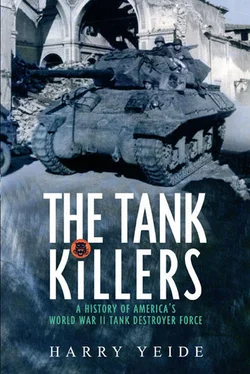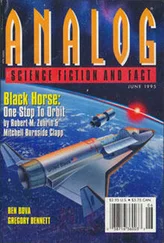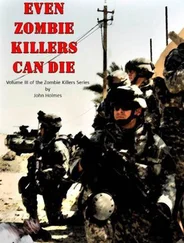Just as Patton had predicted, the M10 looked much like a tank. The somewhat arbitrary distinction between the two armored vehicles would be reflected in frequent references in tank destroyer battalion records to the vehicles as “tanks,” once the M3 had been replaced. Actual tankers in the 1st Armored Division referred to the TD crews as artillery men, but artillery men in the same division called them tankers. 55Tankers in the 743d Tank Battalion conceptualized the difference by referring in radio chatter to tanks as “cans” and to TDs as “can openers.”
Bruce opposed the decision to produce the M10 because he wanted to speed development of a custom-designed M18 Hellcat TD. Battalions that used the M10 nonetheless thought highly of it. Unfortunately, the M10 did not become available until September 1942, so the first tank destroyer battalions entered combat in North Africa using the M3.
The Tank Destroyer Force gained full control over its own training, a situation that differed considerably from the haphazard arrangements that characterized the Army’s separate tank battalions. A Unit Training Center became the heart of Camp Hood and was subsequently augmented by an Individual Training Center and a Replacement Training Center. 56Battalion records during the war suggest that while units did not always get as many replacements as they needed, the ones they did get were generally properly trained to fight in TDs. Separate tank battalions, in contrast, often had to hastily train replacements who had never seen a tank before.
Tank killers were trained not only to fight with their guns but also to conduct “dismounted tank hunting.” Crews of disabled TDs were expected to ambush enemy tanks and raid his tank parks using small arms, grenades, mines, and improvised weapons. Bruce sent Maj Gordon Kimbrell to visit the British Commando School and patterned tank-hunting training on the Commando model. The course employed live grazing fire and exploding practice grenades for the first time in the Army during simulated battlefield conditions. 57The men underwent a grueling schedule that included conducting night reconnaissance, crossing deep streams, climbing slippery barbed-wire-covered banks, scaling steep walls, detecting booby traps, street fighting, and mastering demolitions. 58The training in urban warfare would prove particularly important in Europe, where crews in separate tank battalions would face a steep learning curve because they had received no such instruction.
After surviving this unusually rigorous training regimen, the TD men tended to think of themselves as an elite force.
* * *
There were teething problems, of course. Before the training centers were established, units trained where and as they could. The 667th, 803d, and 899th Tank Destroyer battalions initially pooled their resources and in March 1942 established a joint training center at Fort Lewis, Washington. 59The 628th may have set a record for training on simulated guns—eleven months!—before having an opportunity to fire some borrowed 75mm guns in November 1942. 60
Some of the first battalions received sparse instruction before they had to embark for operations in North Africa. The 701st Tank Destroyer Battalion, for example, was able to conduct its first real range firing with its 75mm SP gear at Fort Dix, New Jersey, on 15 May 1942. The battalion shipped out for the United Kingdom only fifteen days later to prepare for Operation Torch. 61Other battalions received only seven to eight weeks of training before boarding the transports. 62
Thomas Sherman was one of more than two hundred mostly Nebraska men who reported to Camp Bowie, Texas, in February 1942 to join the 636th Tank Destroyer Battalion. They arrived without having received any basic training. The new soldiers received a compressed course from battalion noncommissioned officers (NCOs) but quickly shifted to training on 37mm guns, small arms, and vehicles. Sherman recalled that he never got very good at close-order drill and was always out of step. He would nonetheless become a recon sergeant within a few short months. 63
Even at the new training center, the force at first suffered from a severe shortage of ammunition for the main guns. Crews had to practice with sub-caliber firing using .22-cal rifles bolted to the big guns. The round had a similar trajectory to that of the big guns, but differences in the muzzle velocities caused crews some confusion as they tried to learn how to lead a moving target. 64
Another problem revolved around TD battalion opportunities to train with other units. AGF took steps to organize joint training involving divisions and units that would be attached to divisions in late 1943 and early 1944, but the practice did not become well established until many tank destroyer outfits had already shipped out. 65
Chapter 2
North Africa: Seeing the Elephant
The lessons learned from combat by American troops in North Africa have been manifold, and it has been repeatedly shown that maneuver mistakes in the past have become the Battlefield mistakes of the present.
— U.S. Army observer’s report, January 1943
On 2 and 3 October 1942, Companies B and C, the 2d Reconnaissance Platoon, and part of the medical detachment pulled out of the scattered encampments of the 701st Tank Destroyer Battalion in Northern Ireland. 1They had been in the United Kingdom since early June, training with the American 1st Armored Division and, for several days, the British 61st Infantry Division. One battalion gunner—Corporal Stema, who had no idea that he would soon be killed in action—had even fired an impressive demonstration for the King and Queen.
The departing men knew they were headed somewhere via Macclesfield, England, but no more than that. Captain Gilbert Ellmann led a party of sixty-five enlisted men onto a train. Lieutenant Robert Whitsit and other platoon leaders commanded columns of halftracks and wheeled vehicles, which wound through the countryside following British motorcycle guides who were unfamiliar with the route. “Thus,” recorded the Company B diary, “did [we] move from the Emerald Isle to new adventures.”
The 701st elements were attached to Combat Command B (CCB), 1st Armored Division. The command incorporated the 13th Armored Regiment (less 3d Battalion’s medium tanks); 1st Battalion (light), 1st Armored Regiment; 1st and 2d battalions, 6th Armored Infantry Regiment; 2d Battalion, 503d Parachute Infantry Regiment; 27th Armored Field Artillery Regiment; and an assortment of engineer, antiaircraft, signal, and maintenance units. The diversity reflected the sound theoretical grasp that the all but untried U.S. Army had of the requirements of combined-arms warfare. How that would work in practice remained to be seen.
During a brief stay at an English country estate, the men of the 701st waterproofed their vehicles and learned of the complexities of loading men and equipment onto ships. Only two halftracks from the 2d Reconnaissance Platoon had gone missing during the transfer, never to be seen again. It was clear to the tank destroyer men that the Americans and British had never before worked together on a project such as this, and many confusing and conflicting orders ensued. On the other hand, the men viewed the landscape and the women—in fact, just about everything but the British rations—as distinct improvements over Northern Ireland.
On 9 October, a last-minute payday was imposed on the 701st, with—as the unit diary records—“the inevitable aftermath.” The next day, the first elements—minus several men AWOL—traveled to Weymess Bay, Scotland, and Liverpool to board transport ships. A day later, the remainder embarked, including the missing men, who had been rounded up. The only major foul-up resulted in the assignment of all of the drivers from 2d Platoon, Company B, to the wrong transport; they would not rejoin the platoon until after it had already been committed to battle.
Читать дальше







